
The Ultimate Guide:
Leveraging Data & Technology to Thrive Through Maritime Market Shifts
- Introduction
- Top-of-mind realities
- Seismic shifts
- From the global to the personal
- Critical success factors
- Where Veson fits
- Conclusion
Introduction
On collective changes and individual impact
Maritime has transformed from an industry bound by tradition, tied to legacy approaches, and somewhat wary of technology, to a sector excited about the benefits of data-driven transformation and its ability to simultaneously advance the micro realities of the business and the macro priorities of the global maritime economy. Seismic shifts like decarbonization, regulatory complexity, and risk management have had a significant impact not only on the industry as a whole, but on the ways individual stakeholders within the maritime ecosystem approach their daily work.
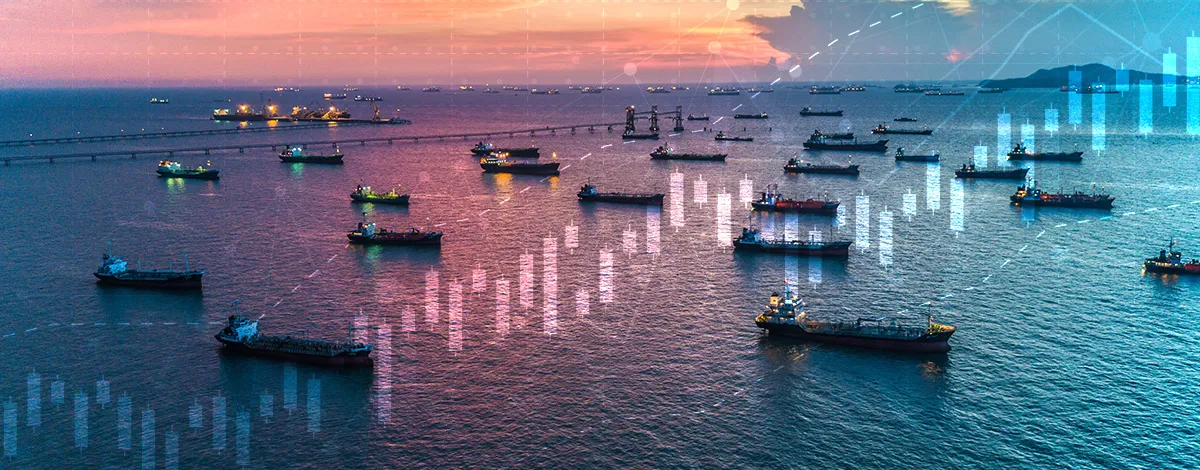
Some of these changes, like digitalization, have made life easier for stakeholders, by reducing dependence on largely manual processes in an industry capable of generating up to 120 million data points each day.1 The scale and speed afforded by digital technologies have contributed to significant expansion of the industry, with today’s global merchant fleet being 65% larger than in 2010, in gt terms.2
Other changes, like globalization and decarbonization, have added new elements and nuances that 70% of maritime stakeholders say have changed their daily workflows.3 Given the complexity of these issues, it is not surprising that maritime shipping stakeholders expect environmental regulations and geopolitical issues to have the most significant impact over the next decade.4 Despite the industry’s inherent volatility and shifting dynamics, maritime stakeholders have proven themselves among the most resilient and adaptable in the global economy.
Join us as we journey through maritime’s metamorphosis from a legacy-bound industry to an economy abuzz with new digital and data-driven possibilities. Together, we will examine the tangible effects of these changes on key stakeholders and lay out critical success factors for thriving in the industry’s future—a future in which change is certain, but so is the ability to anticipate and adapt with greater agility than ever before.
As you make your way through this interactive eBook, keep an eye out for sound bites, videos, and polls. These features will bring content to life and give you a chance to share your own perspective as a key participant in maritime shipping’s transformation. If you like what you see, please pass it on to your colleagues and friends.
64%
of maritime stakeholders say that people are more integral than technology when it comes to digital transformation.5
Share your perspective and see what your peers think!
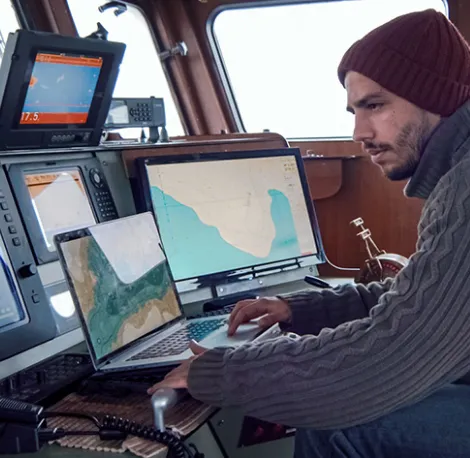
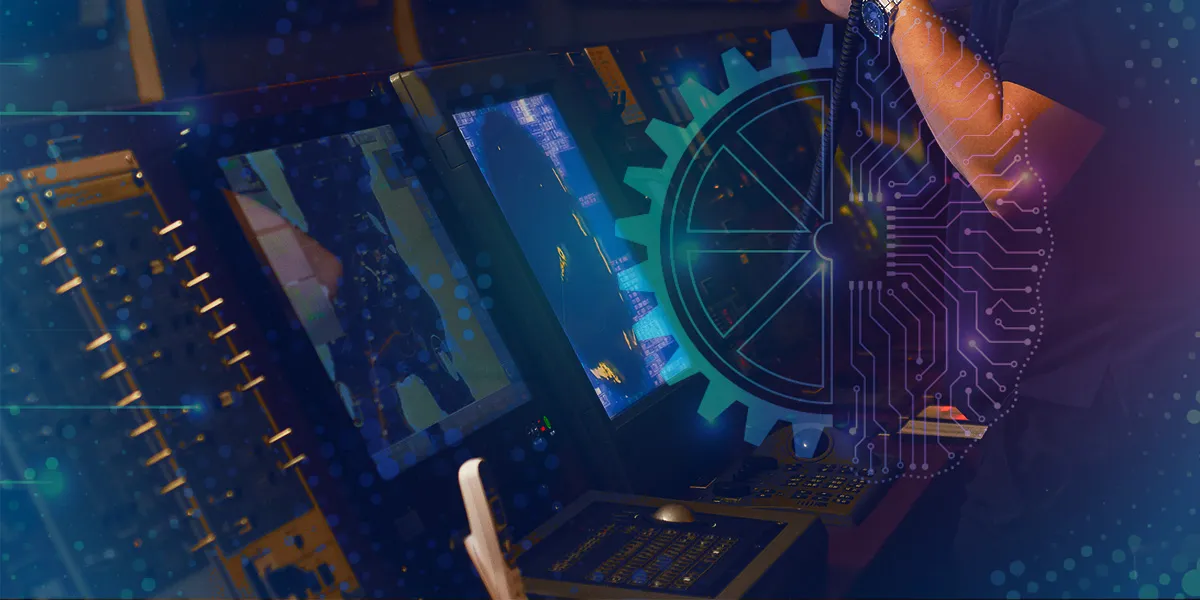
Top-of-mind-realities
Maritime mindshare and digital tailwinds.
The maritime shipping industry’s rapid transformation over the last two decades has been shaped and accelerated by several distinct but intersecting digital tailwinds. These forces are unanimously top of mind for maritime shipping professionals, and collectively they have served to expedite the adoption of digital and increasingly connected approaches.
Complex contracts and pre-fixture workflows
Amid a backdrop of rising competition, the maritime shipping industry has seen a significant increase in the level of complexity in contracts and pre-fixture workflows. These mutually reinforcing factors are manifested in a number of ways, including a radical increase in the volume of voyage documentation, longer negotiation and vetting processes, shorter contract durations, an uptick in competitive bidding, and more. Effectively responding to this requires the adoption of robust digital solutions, which can cut through complexity and provide the efficiency and insight needed to compete more effectively.
$10,400
Global freight rates reached a record price of nearly $10,400 in September 2021 due to competitive bidding.6

Josh Luby | Group Product Manager
Keeping Up with Maritime Contract Complexity
Streamlining your chartering workflow
Continued regulatory changes and environmental urgency
Regulations, particularly those which are focused on reducing emissions, continue to expand and evolve. Although 30% of maritime shipping professionals say they have yet to adapt to these changes, 70% agree that regulations have already changed their day-to-day workflows to some degree.3 And regulations aren’t the only force at play. Rising environmental urgency has also increased counterparty reporting requirements, leading to a desire for transparency around environmental responsibility. Environmental requirements, both regulatory and client-led, require digital solutions in order to be systematically met.
60%
of maritime shipping professionals indicate IMO’s implementation of CII ratings as the near-term regulatory change with the greatest importance and impact.3

Bobby Morse | Product Manager
Managing Regulatory Complexity Panel
Navigating regulations today, tomorrow, and in the future
Expanded risk and a need for intentional risk management
Market volatility and strained margins have both intensified the need for intentional, contract-linked exposure management of both fuel and freight. The securitization of carbon has added a third major pillar of market exposure: carbon exposure. These sources of risk reside outside of an organization’s direct control, but other sources of risk are internal.
In addition to market sources of risk, maritime shipping organizations are staring down significant operational risk, which resulted in over $9 billion in maritime claims between 2017 and 2021.7 Common sources of operational risk include an outsized reliance on tacit knowledge, data gaps, and inflated cost drives, which threaten the P&L. Digital solutions address both elements of risk by enabling maritime shipping business to systematically manage external exposure while simultaneously identifying and eliminating sources of operational risk.
11,503
The Baltic Dry Index has spanned 11,503 points over the past 15 years, reaching its lowest level in 2016.8

Josh Luby | Group Product Manager
Calculating Carbon Risk
Integrating carbon exposure into risk management
The need for agility and efficiency in all areas
As competition grows, so too does the need to operate as efficiently and effectively as possible. In addition to heightened competition, nearly every major input of the voyage has increased. Some of these increases were related to the many impacts of COVID-19, which caused extreme supply chain shortages and led to a 773% increase in maritime operating costs.9 But the truth is, costs have been on the rise for far longer. Since 2016, bunker costs have risen 679%.10 Together, increased competition and inflated cost inputs have eroded the voyage P&L, making the notorious sources of inefficiency and waste untenable in order to operate profitably. Maritime shipping professionals have responded to strained margins by continually seeking new ways to boost efficiency and pursue operational excellence, while minimizing unnecessary costs.

Chris Starks | Senior Manager, Deloitte
The Case for Change
Real-life perspectives on building business buy-in
A multi-faceted deal chain with a desire for data
Amid globalization, volatility, sanctions, and increasing competition, the maritime deal chain has become more and more complex. For both sides of the contract, the voyage workflow involves more systems and stakeholders than ever before, which can lead to limited visibility and lack of continuity. Navigating the complex and highly interdependent deal chain demands stakeholders have convenient access to high-quality information, both from within and outside the organization, to enhance visibility and improve decision making.

Eric Christofferson | Chief Product Officer
The Data Advantage
Strengthening your data foundation with VesselsValue
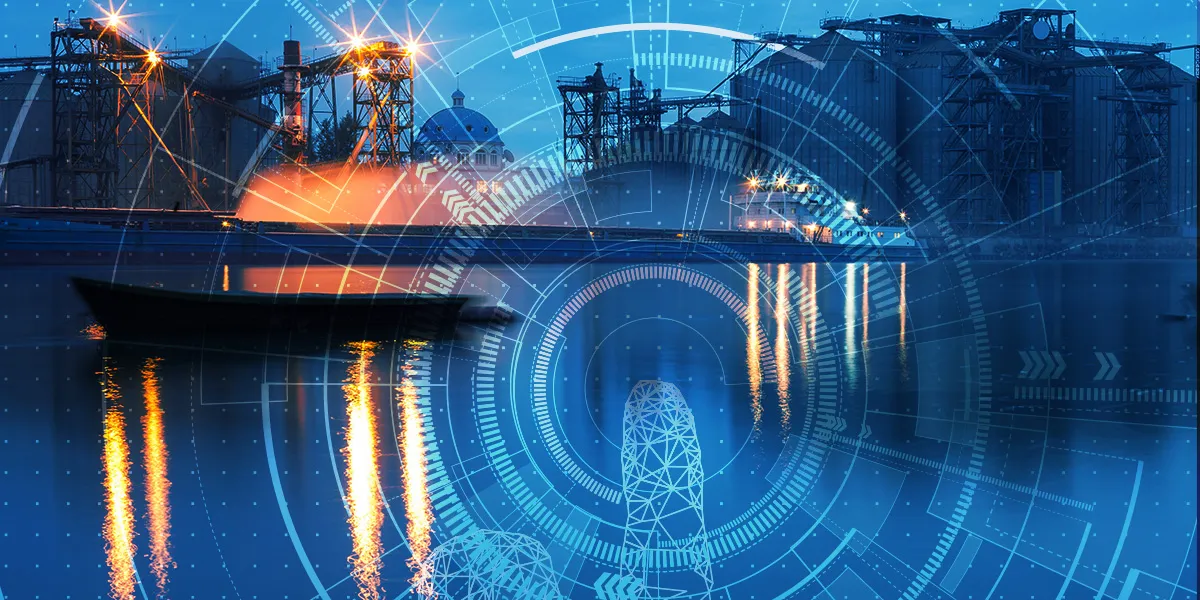
Seismic Shifts
Seismic shifts underpinning the sea change
Together, the maritime shipping industry’s digital tailwinds have given root to a series of seismic shifts that underpin a global sea change—a renaissance of new insight and connectivity that will leave no part of the maritime shipping economy untouched.
For organizations that have resisted the last few waves of digital innovation, these seismic shifts are disruptive at their best and destructive at their worst. But for other organizations, who have embraced digital technologies with an eye on the future, these seismic shifts are a welcome sign of the future of an industry that has its best years ahead of it.

In the past, proprietary models, particularly those related to pre-fixture workflows, were held close to the vest. In many cases, these models were considered a source of differentiation for maritime shipping organizations. In addition to its own proprietary models, each organization and counterparty also had its own standards for data exchange, whether for noon reports, vessel documentation, or claims. This pervasive lack of standardization left stakeholders to navigate the complexity of each carrier or counterparty’s unique approach, leading to redundancy and variation—both of which stand in the way of a more efficient trade.
As digitalization swept across the industry, lowering the barriers to connectivity and making access to high-integrity data more universal, we have seen a fundamental shift toward standardization; a shift that shows no signs of slowing. Today, standardized and validated data have become table stakes for maritime shipping organizations on both sides of the contract to compete efficiently and effectively. Organizations are now differentiated on their ability to integrate these data into their daily decision making—and to do so with exceptional agility.
Today, standardized and validated data have become table stakes for maritime shipping organizations on both sides of the contract to compete efficiently and effectively. Organizations are now differentiated on their ability to integrate these data into their daily decision making—and to do so with exceptional agility.
As an example, data on trade flows has the ability to dramatically enhance decisions made at the pre-fixture stage of the voyage. But these data cannot remain passive—they have to be actively surfaced at the moments where they can make the greatest impact in the larger voyage workflow. The same is true of congestion analytics, which can dramatically enhance voyage operations provided they are delivered and accessed in context.
Share your perspective and see what your peers think!


The maritime shipping industry’s first foray into digitalization saw the development of proprietary, homegrown systems. These systems did an admirable job meeting individualized requirements in the early days of the digital age—when mainstreamed solutions could not yet meet the full range of sophisticated requirements. But homegrown or bespoke solutions are costly to maintain, difficult to adapt, and often detract from an organization’s ability to focus on its core competencies. In addition, homegrown solutions can pose significant integration challenges. Today, we are seeing a shift in this approach as organizations embrace a single source of the truth and adopt enterprise-grade platforms that are tightly integrated across stages of the workflow.
As the industry moves from disparate systems to connected ones, comprehensive solutions that bridge workflow and data will become ever-more important. Equally important will be the ability of these solutions to work well with others—stewarding a single source of the truth across every corner of an organization’s technology landscape.
That is not to say a single solution can satisfy all of the modern maritime shipping organization’s digital needs. It takes a digital village. But this village must live in community, sharing information and insight freely and seamlessly without latency and outsized manual effort.
As the industry moves from disparate systems to connected ones, comprehensive solutions that bridge workflow and data will become ever-more important. Equally important will be the ability of these solutions to work well with others—stewarding a single source of the truth across every corner of an organization’s technology landscape. Finally, it is important to note that connectivity not only applies across systems—it also spans across stakeholders. Winning solutions will do their part to bring maritime shipping’s vast community of stakeholders on all sides of the contract ever-closer together.
Share your perspective and see what your peers think!
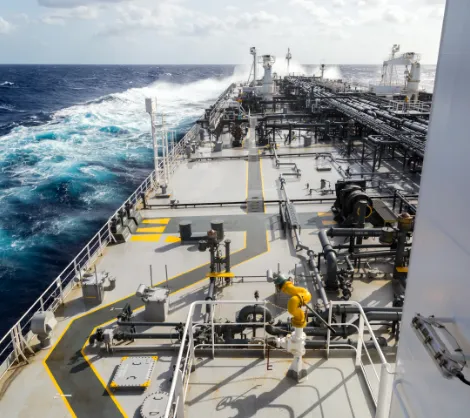

A tight-knit industry filled with generations of dedicated maritime shipping professionals, it makes sense that the maritime shipping economy has historically relied heavily on institutional knowledge. In some cases, this knowledge is nuanced, tacit insight that cannot be captured or replicated across an organization. In other cases, an outsized reliance on institutional knowledge can present a source of operational risk, particularly when senior team members are unavailable, team turnover occurs, or growth simply outpaces the number of existing subject matter experts on a team.
To reduce reliance on the more tangible aspects of institutional knowledge, we are seeing organizations place a heightened focus on organizational insight—which seeks to replicate the knowledge key team members in a more scalable way to capability and performance across the entire organization. One approach to growing organizational knowledge is establishing standard workflows, shared thresholds for key metrics, and a centrally accessible repository for key information.
To reduce reliance on the more tangible aspects of institutional knowledge, we are seeing organizations place a heightened focus on organizational insight—which seeks to replicate the knowledge key team members in a more scalable way to capability and performance across the entire organization.
Another way to grow organizational knowledge is to provide everyone access to the same, validated data. In addition to naturally reducing reliance on individual knowledge and intuition, validated data also lowers environmental and operational risk, increases reliability and confidence, and enables more effective decision making for maritime shipping organizations. Ultimately, the introduction of validated data strengthens maritime shipping organizations individually and the entire industry collectively.
Share your perspective and see what your peers think!
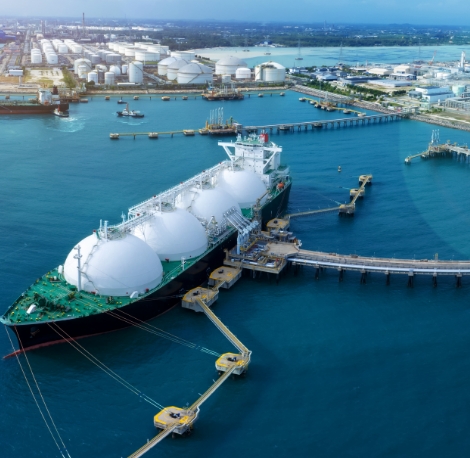

Opaqueness has long been the mode of operation in maritime shipping, as organizations work to protect that which is uniquely theirs. Today, we are seeing a departure from this as organizations welcome and even celebrate a level of transparency that radically transforms efficiency for everyone involved. This transparency is a powerful asset to owner-operators, who seek to showcase the strength of their fleets, the reliability of their operations, and their commitment to sustainability. It is also a powerful asset for tonnage charterers, who have an unwavering eye on efficiency and sustainability in their global supply chain operations.
This move towards transparency, while accelerated by environmental and regulatory forces, is increasingly driven by counterparty- and carrier-led initiatives. One example of this is the Sea Cargo Charter, which defines transparency as one of four guiding principles. Signatories are committed to sharing their climate alignment stores annually
This transparency is a powerful asset to owner-operators, who seek to showcase the strength of their fleets, the reliability of their operations, and their commitment to sustainability. It is also a powerful asset for tonnage charterers, who have an unwavering eye on efficiency and sustainability in their global supply chain operations.
It is important to note that the industry-wide increase in transparency has not extinguished differentiation. Instead, it has strengthened it. Transparency naturally fortifies the bonds of trust that have always propelled the maritime shipping industry forward.
Share your perspective and see what your peers think!
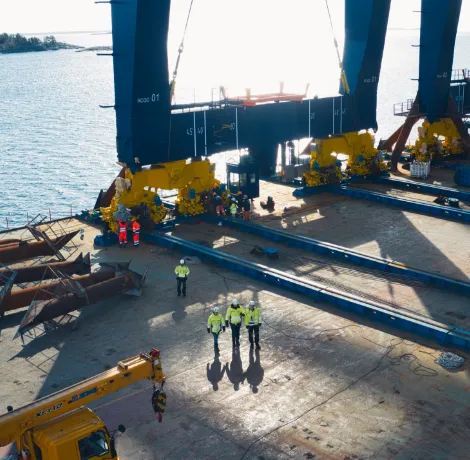
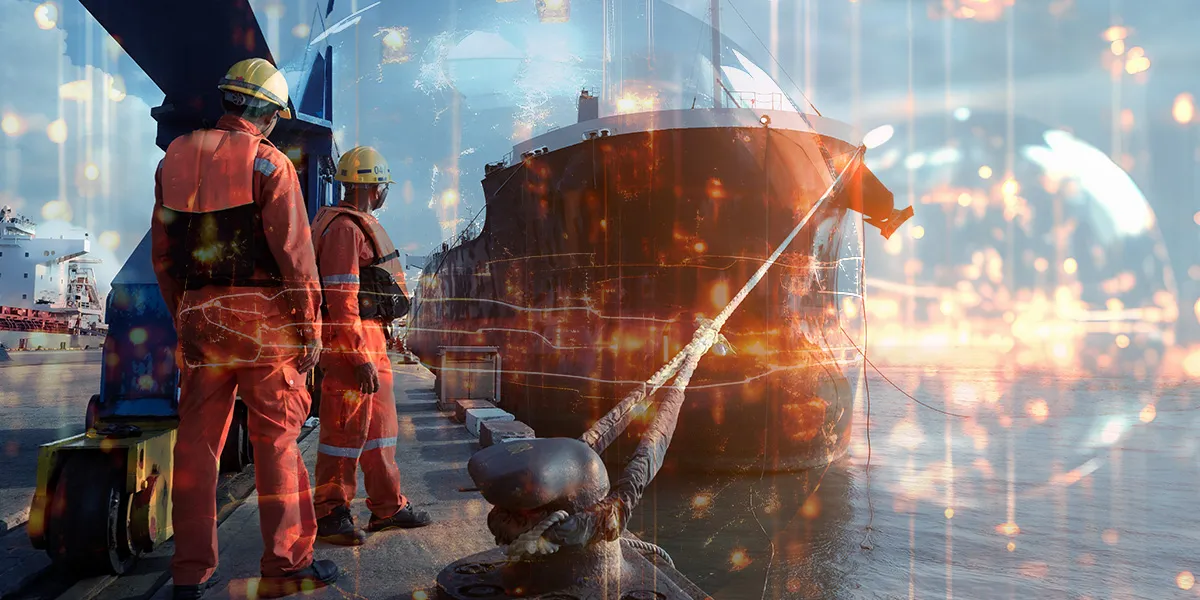
From the global to the personal
From the global to the personal: how are these realities impacting individual business and stakeholders?
While the impact of these realities at the ecosystem and organizational level is clear, their impact on individual stakeholders and their daily workflows is less obvious. Some of the key ways these seismic shifts have an impact at the individual level include:
New systems and processes
With the industry’s rapid pace of innovation, individual stakeholders must become accustomed to adopting new technologies and new ways of working. What were once manual processes have become largely automated. These changes ultimately aim to make life easier for stakeholders, but they still require learning and adaptability by each individual team member.
Going forward, there is going to be a lot more new technology for data automation, so there will be a lot more manual work cut out that will save our time and efforts.”
Joyce Wang
Business Application Manager, Eagle Bulk Shipping
Evolving roles
The evolution of systems and processes has naturally shifted stakeholder roles within the ecosystem, reducing the reliance on some roles while paving the way for new ones. As maritime organizations’ priorities change, the Head of Sustainability, Head of Compliance, Head of Digitalization, and Data Scientist have emerged as critical strategic stakeholders.
As the industry’s priorities evolve, we’re seeing a wider variety of roles involved in the selection of a commercial solution—both as primary decision makers and influencers. It’s become increasingly important for maritime organizations to find a solution that can support each of their stakeholders’ unique requirements.”
Josh Luby
Group Product Manager, Veson Nautical
Interconnected workflows
As the industry aims to reduce its dependence on institutional knowledge, individual stakeholders’ workflows have become increasingly connected and dependent upon one another. The operations team requires visibility into chartering, the financial team must collaborate closely with chartering to understand contract details and performance, and so on.
Digitalization was already making waves in the industry, but with an increasingly global scale and less in-person collaboration, maritime organizations have had to become creative in the ways they work together. This collaboration extends beyond communication—for example, in our chartering module, multiple charterers can work together simultaneously.”
Michael Steenfeldt
Head of Commercial Business Support, Clipper
New ways of collaboration
Collaboration is key in the maritime ecosystem, but the ways in which stakeholders collaborate have evolved significantly, particularly with the rise of remote work. Now, stakeholders are forced to collaborate both directly and indirectly in new and increasingly digital ways. This collaboration is a powerful tool in navigating increased workflow complexity as multiple stakeholders can work simultaneously in a single workspace.
Doesn’t matter whether you’re doing accruals to risk, whether you’re doing operating, chartering – you have all within one system and you can quickly have an overview of everything.”
Eric Christofferson
Chief Product Officer, Veson Nautical
Resilience amid uncertainty
While not a tangible change to the daily responsibilities of maritime shipping professionals, persisting uncertainty around regulations, market shifts, global events, and geopolitical relations have all required maritime shipping stakeholders to become highly resilient and adaptive in any set of circumstances. The pandemic represented a paradigm shift in maritime agility—and this shift continues today.
When working with digitalization, we feel that it is very important to balance present with future thinking. We need to both exploit our current business model, and to explore new opportunities.”
Martin Hjelle
Head of Technology & Digital Strategy, Western Bulk

Critical success factors
Who sinks and who swims?
Critical success factors for digital success.
How can your organization turn these seismic shifts and their associated impact into momentum to boost your competitive edge and advance your long-term success? Below, we outline six key factors for success in our ever-changing industry.
If you find yourself feeling behind the curve, don’t worry. Remember that digital differentiation is a journey and not a destination. If you’d like to discuss your digital strategy with one of our technologists, we’d be happy to help. Our clients consider us responsive and collaborative partners on their digital journeys.
1
Establish a strong and scalable digital foundation.
Selecting and establishing a robust digital foundation is the single most critical driver in the long-term success and scalability of your digital strategy. The contract is at the center of maritime shipping workflows, so rolling out an industry-leading commercial freight platform is a perfect place to start. Make sure it is robust, capable of seamless integration, and coupled with a strong and responsive services organization that will make sure you realize your intended ROI.
Where to focus:
- Connected workflow
- Robust integration capabilities
- Proven implementation approach
2
Strengthen operational excellence and agility.
Once you have a strong and scalable digital foundation, it’s time to turn an eye to your operations. By standardizing processes and automating workflows that are not-value added, you can realize immediate gains in efficiency and operational performance. Make sure this visibility and automation is inclusive of your P&L—the single greatest indicator of your maritime organization or freight division’s financial success.
Where to focus:
- Process standardization
- Workflow automation
- Dynamic P&L visibility
3
Build data into daily decision making.
Next, it’s time to embrace data as a powerful enabler of more informed, agile, and impactful decision making. In addition to standardizing access to your organizational data, look to for sources of market data that is validated, comprehensive, and widely trusted by your counterparties and peers. Make sure to go beyond merely accessing this data—pursue the utilization of these insights within your workflow and reporting functions.
Where to focus:
- Standardized real-time and historical insights
- Access to validated market data
- Data-driven decision support
- Robust, customizable reporting
4
Cultivate a culture that embraces and manages change.
Once you have a strong and scalable digital foundation, it’s time to turn an eye to your operations. By standardizing processes and automating workflows that are not-value added, you can realize immediate gains in efficiency and operational performance. Make sure this visibility and automation is inclusive of your P&L—the single greatest indicator of your maritime organization or freight division’s financial success.
Where to focus:
- Thriving client community
- Client progress reviews
- Automatic and frequent product updates
5
Hand power back to individual stakeholders.
Ultimately, people are the change agents in unleashing the new, digitally connected future of maritime shipping. Thriving in this reality requires a commitment to stakeholder empowerment in every part of the organization. This includes considering the impact of new solutions across functions, offering training and continuing education resources to empower end users, and providing technology that is accessible and usable.
Where to focus:
- Solution fit across stakeholders
- Training and continuing education
- Anytime, anywhere access
- Intuitive interface
6
Advance the collective practices of the industry shoulder-to-shoulder.
The transformation of maritime shipping is so much bigger than any one organization, voyage, contract, or decision. Our collective response to the seismic shift will ‘lift all ships’ by elevating efficiency, insight, and decision-making for everyone. Remaining at the wavefront and not in the wake requires a commitment to rapid innovation, a deep understanding of how the global maritime shipping economy operates and interacts, and a dedication to moving the entire industry forward.
Where to focus:
- Rapid pace of innovation
- Support for both sides of the freight contract
- Deep expertise in maritime
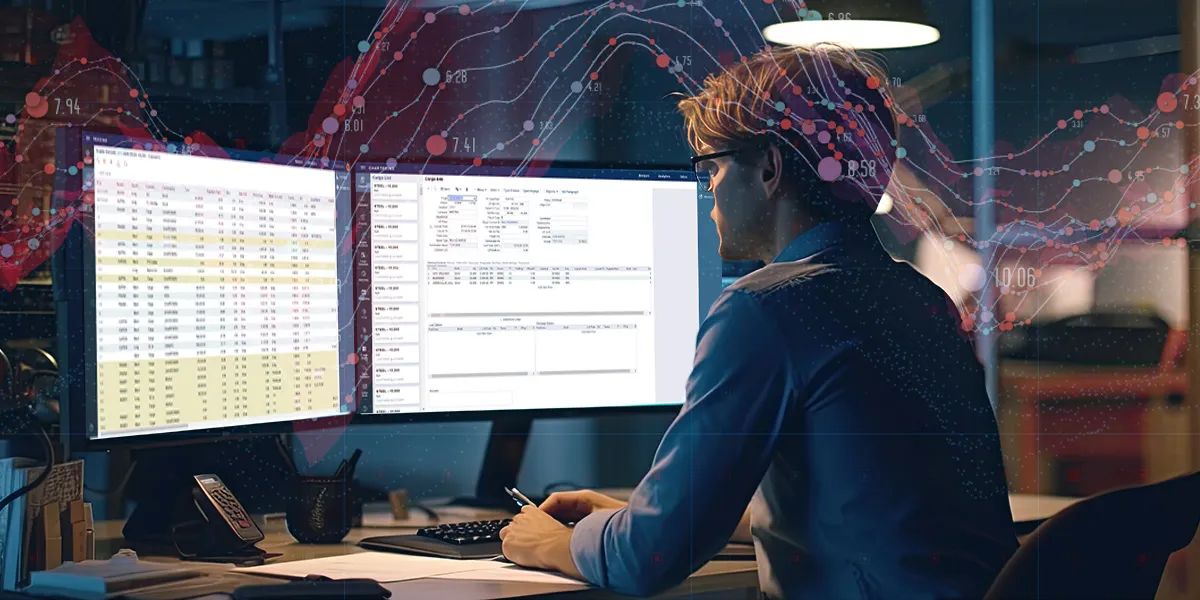
Where Veson fits
A bold vision for maritime freight management.
Veson Nautical is a technology and data company committed to delivering value across marine commercial decisions. We bring together in-depth data and analytics, cutting-edge innovation, and deep insight into supply chain optimization to deliver the most robust platform in the maritime shipping world—the standard platform that propels maritime commerce.
Building on this foundation, Veson brings together ship owners, operators, brokers, financers, governing bodies, traders, charterers, and partners to navigate the industry’s many seismic shifts with confidence, collaborate on a better way, and move the entire industry forward.
Here are some of the ways our platform and partnership empower our clients to remain ahead amid an ever-changing industry:
We provide the most robust commercial platform in the maritime world.
Our platform is widely recognized for its comprehensiveness and capacity to support even the most complex and nuanced maritime shipping workflows.
We innovate fast, a step ahead of the industry.
We release more than 500 new capabilities each year, which are automatically added to our standard code base in order to drive even greater value for our user community. All of these capabilities are shaped by real client input.
We serve all sides of the trade.
Our client community includes the world’s leading owner-operators, commodity traders, tonnage charterers, and brokers. All of them consider our solutions integral to their daily work.
We deliver so much more than contract management.
Our platform couples robust contract management solutions with rich offerings in maritime data and vessel documentation, which we integrate and bring to life inside your commercial workflow.
We are true partners.
Home to the largest maritime shipping consulting organization in the world, we empower our clients on their digital journeys through a combination of responsive project management, end-user training, continuing education, and long-term partnership.
Ready to discover what Veson can do for your organization?
Share your perspective and see what your peers think!

Conclusion
Moving confidently forward, together.
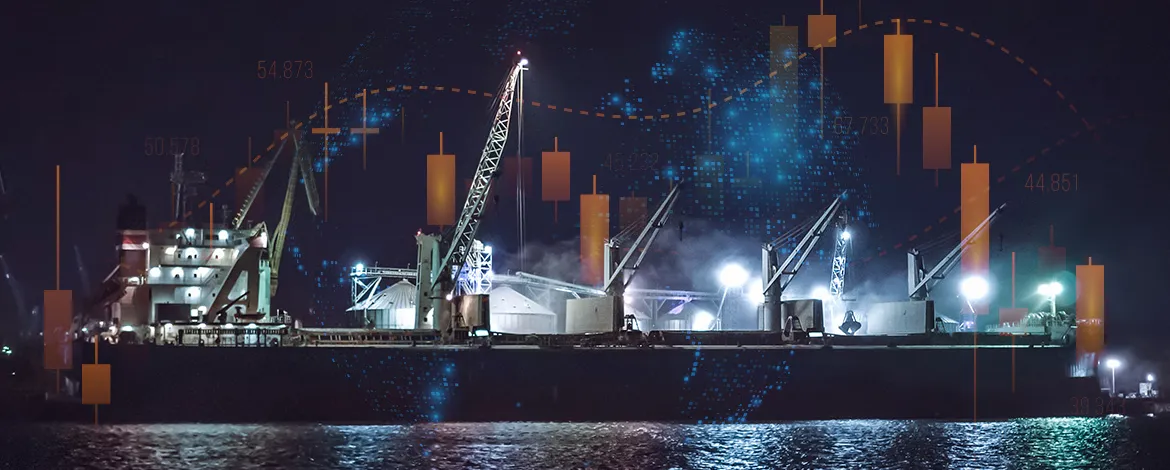
Maritime shipping is both an industry of tradition and an industry of change. The seismic shifts currently impacting today’s trade are decisive, far-reaching, disruptive, and beyond the control of any one maritime shipping organization. But, the industry’s collective response to these shifts is determined by the individual strategies and approaches of the businesses and stakeholders that make up maritime trade.
Each of us has an important role to play in shaping the future of a storied industry that is responsible for moving the vast majority of the world’s raw materials. And so, each organization is left with a decision. Which side of the wave will we be on? Will we get swept away in the tide or confidently move forward into the sea change?
Take control of the current with the right partner.
